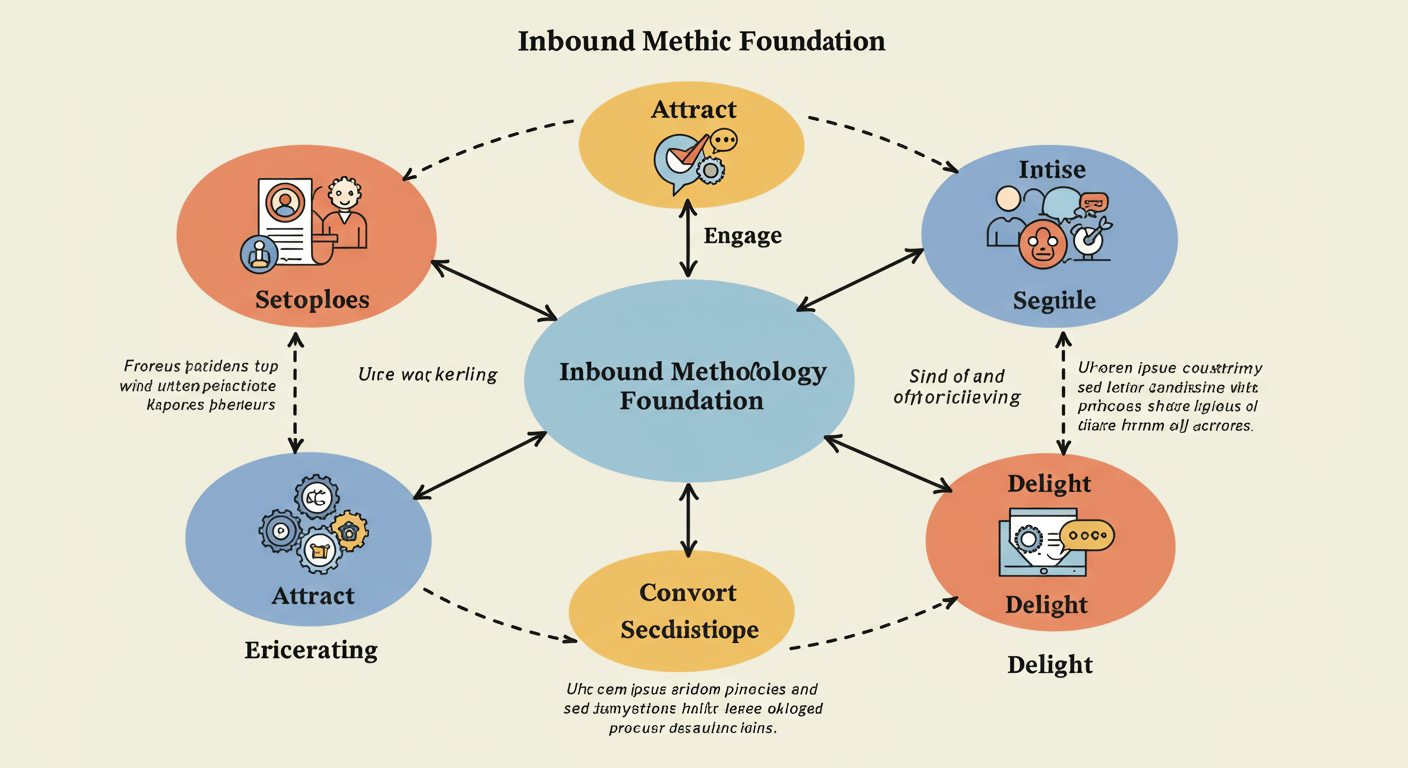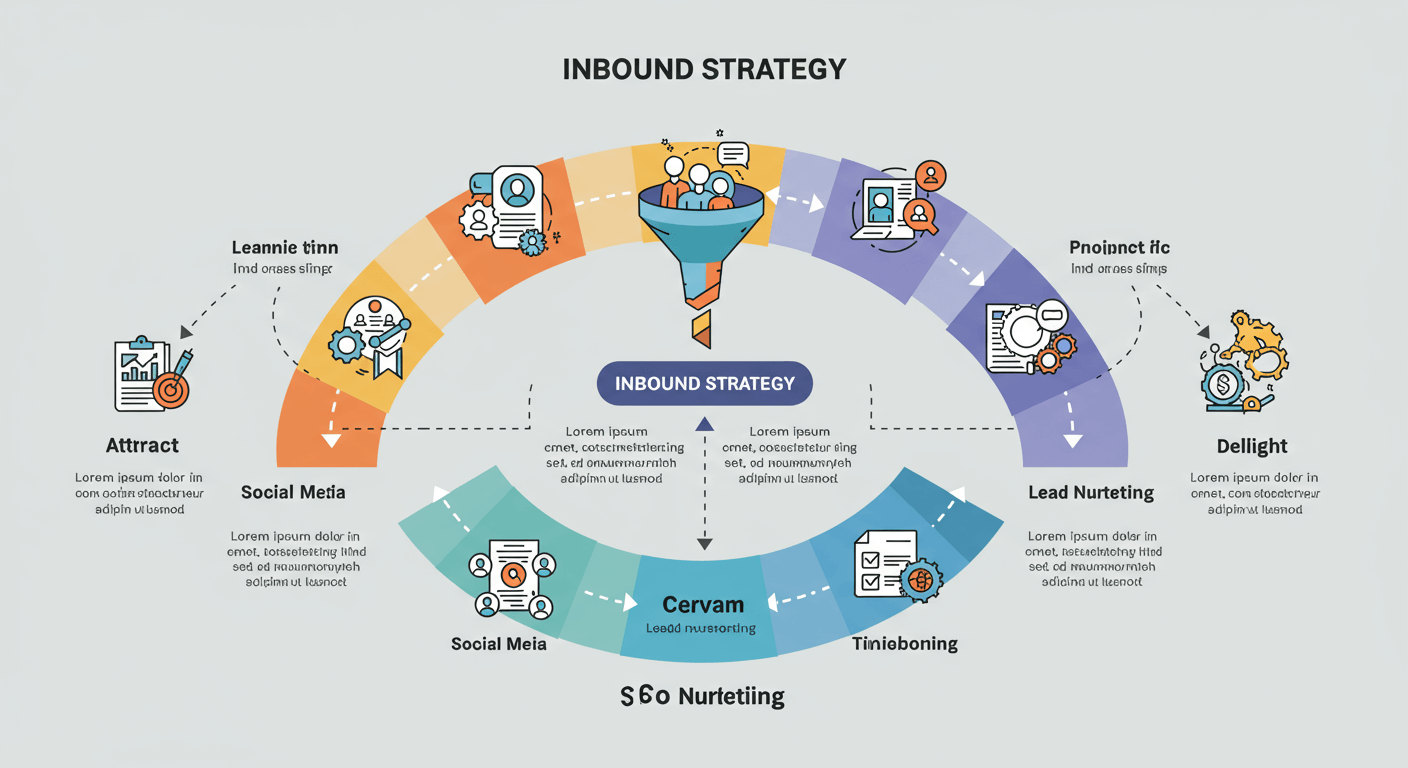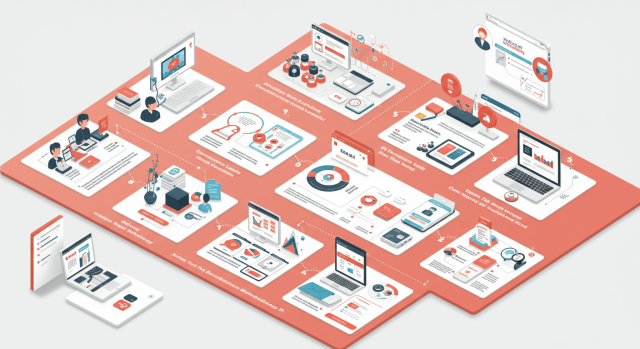Traditional marketing feels like shouting into a crowded room, hoping someone will listen. HubSpot’s inbound methodology flips this approach entirely, creating a systematic way to attract, engage, and delight customers naturally. Instead of interrupting potential customers with unwanted ads, inbound marketing draws them in with valuable content and experiences tailored to their needs.
The inbound methodology has revolutionized how businesses think about customer acquisition and retention. By focusing on providing value at every stage of the customer journey, companies can build stronger relationships, generate higher-quality leads, and create lasting customer loyalty. This comprehensive guide will walk you through each stage of HubSpot’s inbound methodology, showing you how to implement these strategies effectively for your business.
Whether you’re new to inbound marketing or looking to refine your existing approach, understanding this methodology will transform how you connect with your audience and grow your business sustainably.
Understanding the Inbound Methodology Foundation

HubSpot’s inbound methodology operates on a simple yet powerful principle: provide value first, and customers will naturally gravitate toward your business. This approach recognizes that modern consumers are empowered with information and choice, making them resistant to traditional interruption-based marketing tactics.
The methodology centers around the customer’s journey rather than the company’s sales process. By aligning your marketing and sales efforts with how people actually research, evaluate, and purchase products or services, you create a more natural and effective growth strategy.
At its core, the inbound methodology acknowledges that people don’t want to be sold to—they want to be helped. This fundamental shift in perspective changes everything about how you approach marketing, from the content you create to the way you nurture leads through your sales funnel.
The Four Stages of the Inbound Methodology
Attract: Drawing in Your Ideal Customers
The attract stage focuses on drawing in the right people with valuable content and conversations that establish you as a trusted advisor. Rather than casting a wide net hoping to catch anyone, inbound marketing targets specific personas who are most likely to become satisfied customers.
Content Marketing Excellence
Creating remarkable content serves as the foundation of successful attraction strategies. Blog posts, videos, infographics, and podcasts that address your audience’s pain points and questions naturally draw people to your website. The key lies in understanding what your ideal customers are searching for and creating content that provides genuine value.
Search engine optimization plays a crucial role here. By researching and targeting keywords your prospects use when looking for solutions, you ensure your content appears when they need it most. Long-tail keywords often prove particularly effective because they capture people who are further along in their research process.
Social Media Engagement
Social media platforms provide powerful channels for distributing your content and engaging in meaningful conversations with your audience. Rather than using social media solely for promotion, focus on sharing insights, answering questions, and participating in industry discussions.
Each platform serves different purposes in your attraction strategy. LinkedIn excels for B2B content and professional networking, while Instagram might better serve visual brands targeting consumers. The key is choosing platforms where your ideal customers spend their time and engaging authentically.
Engage: Converting Visitors into Leads
Once you’ve attracted visitors to your website, the engage stage focuses on converting them into leads by offering valuable resources in exchange for their contact information. This stage requires a delicate balance between providing value and gathering the information you need to nurture them effectively.
Landing Page Optimization
Effective landing pages serve as the bridge between your content and lead generation. Each landing page should focus on a single offer, removing navigation and other distractions that might prevent visitors from converting. The headline, copy, and design should work together to communicate the value of your offer clearly.
Forms play a critical role in the conversion process. Ask for only the information you need initially—typically just name and email address. You can gather additional details as leads progress through your funnel and trust builds between you and your prospects.
Lead Magnets and Premium Content
Premium content offers—such as ebooks, whitepapers, webinars, or templates—provide significant value that justifies visitors sharing their contact information. The best lead magnets solve specific problems your prospects face and position your company as a helpful resource.
Consider the stage of the buyer’s journey your prospects are in when creating lead magnets. Top-of-funnel content might focus on problem identification and education, while middle-funnel content could provide solution comparison guides or detailed implementation frameworks.
Delight: Turning Customers into Promoters
The delight stage often gets overlooked, but it’s where the most significant long-term value gets created. Delighting customers transforms them into promoters who refer new business and provide testimonials that help attract new prospects.
Exceptional Customer Service
Outstanding customer service starts before the first purchase and continues throughout the entire relationship. This includes providing clear onboarding processes, responsive support, and proactive communication about product updates or improvements.
Consider implementing customer success programs that help clients achieve their desired outcomes using your product or service. When customers succeed, they’re more likely to remain loyal, purchase additional products, and recommend you to others.
Ongoing Value Creation
Continue providing value to customers after they’ve made a purchase. This might include exclusive content, advanced training, user communities, or regular check-ins to ensure they’re maximizing the value from their investment.
Customer feedback loops help you understand what’s working well and where improvements are needed. Regular surveys, interviews, and usage data analysis provide insights that inform both customer success initiatives and product development efforts.
Implementing the Flywheel Model
HubSpot evolved their thinking from a traditional funnel model to a flywheel model, which better represents how inbound methodology actually works. The flywheel emphasizes that customers don’t just flow through a linear process—they can become the driving force that attracts new customers.
Building Momentum
The flywheel model recognizes that happy customers create momentum that makes attracting new customers easier. Positive reviews, referrals, and case studies from satisfied customers provide social proof that attracts new prospects more effectively than traditional advertising.
This momentum builds over time as you consistently execute the inbound methodology. Each piece of content you create, every positive customer interaction, and all the value you provide contributes to the flywheel’s speed.
Removing Friction
Identifying and eliminating friction points throughout the customer journey helps the flywheel spin faster. This might mean simplifying your website navigation, streamlining your sales process, or improving your customer onboarding experience.
Regular analysis of your conversion rates, customer feedback, and support tickets can reveal where friction exists in your process. Small improvements in these areas often yield significant results in overall performance.
Measuring Inbound Success
Tracking the right metrics ensures your inbound efforts generate real business results. Different metrics matter at each stage of the methodology, and understanding these helps you optimize your approach continuously.
Attract Stage Metrics
Website traffic, organic search rankings, and social media engagement indicate how well your attraction efforts are working. However, focus on qualified traffic rather than just overall volume. A smaller number of highly relevant visitors often converts better than large amounts of unqualified traffic.
Content performance metrics help you understand which topics and formats resonate best with your audience. Time on page, bounce rate, and social shares provide insights into content quality and relevance.
Engage Stage Metrics
Conversion rates on landing pages and forms reveal how effectively you’re turning visitors into leads. Email open rates, click-through rates, and lead scoring help you understand how engaged your prospects are with your content.
Lead quality metrics prove crucial for measuring engage stage success. Track how leads from different sources progress through your sales process to identify which attraction channels generate the highest-quality prospects.
Delight Stage Metrics
Customer satisfaction scores, retention rates, and net promoter scores indicate how well you’re delighting customers. These metrics often correlate strongly with long-term business growth and profitability.
Referral rates and customer lifetime value provide concrete measures of how delighted customers contribute to business growth. Tracking these metrics helps justify continued investment in customer success initiatives.
Building Your Inbound Strategy

Successfully implementing HubSpot’s inbound methodology requires careful planning and consistent execution. Start by clearly defining your ideal customer personas and understanding their journey from awareness to advocacy.
Develop a content strategy that addresses each stage of the buyer’s journey for your different personas. This ensures you have the right content to attract, engage, and delight prospects and customers effectively.
Technology plays a crucial role in scaling inbound efforts. Marketing automation, CRM systems, and analytics tools help you execute more sophisticated strategies while maintaining personalization at scale.
Regular analysis and optimization keep your inbound efforts performing at their peak. Monthly reviews of key metrics, quarterly strategy assessments, and annual planning cycles help you adapt to changing market conditions and customer needs.
Your Path Forward with Inbound Marketing
HubSpot’s inbound methodology provides a proven framework for sustainable business growth. By focusing on attracting the right people, engaging them with valuable content, and delighting them with exceptional experiences, you create a self-reinforcing system that gets stronger over time.
The methodology’s success lies in its customer-centric approach. Instead of pushing your message onto reluctant audiences, you pull interested prospects toward your business by providing genuine value at every interaction.
Start implementing the inbound methodology by choosing one stage to focus on initially. Whether you begin with creating remarkable content to attract visitors or optimizing your lead capture process to engage prospects better, consistent execution will yield results over time. As you build momentum in one area, expand your efforts to encompass the full methodology for maximum impact.




